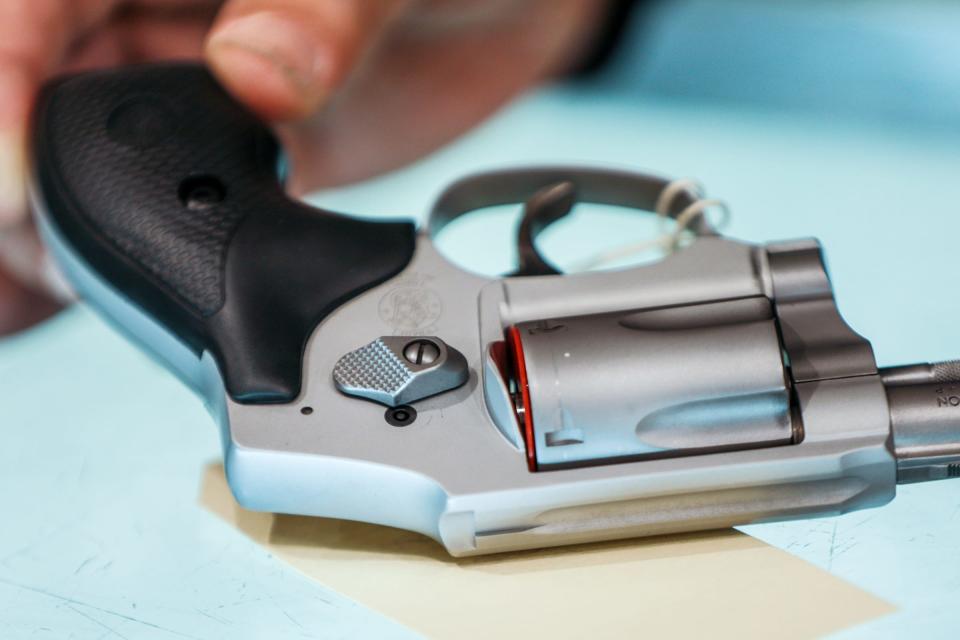Here's how Michigan's red flag gun law works
Michigan now allows law enforcement officers to seize firearms from individuals who have been found by a court to pose an extreme risk to themselves or others.
Those requests, known as Extreme Risk Protection Orders, are available under a law that took effect in February.

Here are some frequently asked questions about the law:
Who can seek a court order allowing law enforcement to temporarily seize firearms from an individual found to pose a risk?
A: A family member of the person, a spouse, former spouse, someone who dated the person or has a child with the person; someone who has lived in a household with the person; a guardian, law enforcement officer, or health care provider.
How are requests made?
A: A requester completes a form with the family division of a circuit court. Forms are typically available on a court website, a county clerk website or at the county clerk’s office.
What happens next?
A: The case is assigned to a judge for review. Courts are instructed to give such requests expedited review.
What kind of information is needed for a judge to issue an order?
A: The requester must provide facts showing an order is necessary because the person “can reasonably be expected within the near future to intentionally or unintentionally seriously physically injure himself, herself, or another individual by possessing a firearm, and has engaged in an act or acts or made significant threats that are substantially supportive of the expectation.” The court must find that a person meets that criteria by a preponderance of the evidence and must state its reason for approving or denying the request.
More: Detroit residents, elected officials turn out for march against gun violence
What kinds of things will a judge consider before deciding?
A: An individual’s history of violence or threats of violence, any history of serious mental illness or serious emotional disturbance, any pending criminal charges or previous convictions, any probation or parole orders and other factors the court considers relevant.
What happens if an order is issued?
A: The court then determines whether the individual must surrender the gun or guns immediately or within a 24-hour period. If immediate surrender is ordered, the judge shall also issue a search warrant allowing officers to search for the gun or guns to be seized.
How long does an Extreme Risk Protection Order last?
A: The orders expire one year after the issue date, unless a court modifies them.
Can such an order be filed against someone who doesn’t own a firearm?
A: Yes. The orders prevent restrained individuals from possessing or purchasing firearms.
More: Churches in metro Detroit to turn guns into plowshares through buyback programs
What is the penalty for violating an Extreme Risk Protection Order?
A: Violators are subject to immediate arrest. The court can find them in contempt, automatically extend the order and pursue criminal penalties including up to a year in prison for a first offense and up to five years for subsequent offense.
Can a person subject to an Extreme Risk Protection Order contest it?
A: Yes. A restrained person can request a hearing before a judge at any time asking to modify or rescind such an order.
What must a restrained person do to get his or her gun or guns back?
A: The restrained individual “must prove by a preponderance of the evidence that the restrained individual no longer poses a risk to seriously physically injure another individual or the restrained individual by possessing a firearm.”Contact John Wisely: [email protected]
This article originally appeared on Detroit Free Press: Michigan red flag gun law: How it works
Solve the daily Crossword

